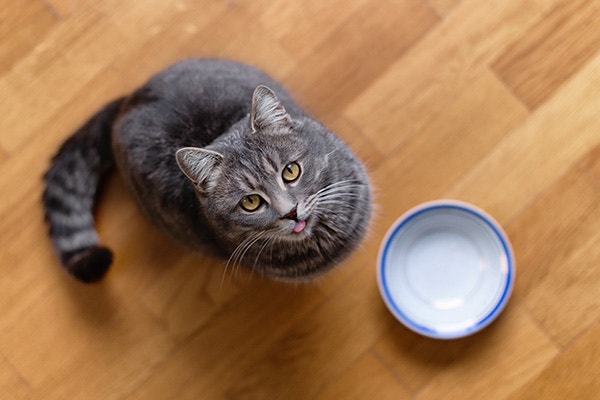Cat in Heat: Understanding Your Pet's Heat Cycle


Share
When a “cat goes into heat,” she enters the oestrus phase of her reproductive cycle and becomes sexually receptive. This natural behaviour can be surprising if you're unfamiliar with it, but understanding cat in heat symptoms and what happens during this time is key to providing the best care for your cat.
If you're unsure what to do when your cat is in heat, understanding the signs can help you better manage the situation if your cat isn’t spayed (without a surgical procedure). In this article, we’ll guide you through the signs of a cat in heat, what to expect, and how to manage her needs to ensure she’s comfortable and well-cared for.
Signs That a Cat’s in Heat
If your cat’s in heat, she might present several noticeable behaviours as part of her reproductive cycle. These signs can vary in intensity but often include:
- Excessive meowing: Loud, persistent vocalisations to attract potential mates.
- Restlessness: Increased activity, pacing, and agitation as your cat searches for a mate.
- Increased affection: Rubbing against furniture, people, or pets more than usual. Some cats may even become affectionate—find out more about why your cat is clingy.
- Lowered body posture: Arching the back and raising the tail when petted, indicating receptiveness to mating.
- Marking territory: Urine spraying to signal availability to male cats.
- Cat zoomies: Increased bursts of energy and erratic movements.
- Excessive grooming: Some cats may frequently clean themselves to maintain their scent.
Recognising cat in heat symptoms and knowing what to do when your cat is in heat is crucial for preventing unwanted behaviour, like excessive calls or attempts to escape, so that you can provide the proper care.
To prevent unplanned litters, keep your cat indoors during heat, as she will seek a mate and attract male cats. Spaying—surgically removing the uterus and ovaries—is recommended for her health, safety and well-being. Consult your vet to determine the best time to book the procedure and the right time for your cat.
How Long Is A Cat In Heat?
Are you wondering how long a cat stays in heat? Typically, a cat stays in heat for about a week, though it can vary. A cat in heat typically remains in this phase for about 4-10 days, but the exact duration depends on her breed, age, and individual differences. If she does not mate, the usual cat heat cycle repeats every two to three weeks, leading to frequent behavioural changes.
Seasonal factors like daylight hours and temperature can also influence the frequency and intensity of heat cycles. Female cats may become restless, vocal, and more affectionate during these cycles. To help your cat stay comfortable, provide a calm environment, increase interactive play, and consider using pheromone diffusers to ease anxiety. Keeping her indoors also means you can observe her closely in a stress-free space while she navigates the cat heat cycle without the attention of male cats.
At What Age Do Cats Go into Heat?
A cat in heat usually stays in this phase for about 4-10 days, though this can vary depending on breed, age, and individual differences. If your cat does not mate, she may enter heat again within two to three weeks. Factors like daylight hours and temperature can also influence the cat's heat cycles.
Providing a calm environment, interactive play, and pheromone diffusers can help ease anxiety and reduce disruptive behaviours. Cat in heat symptoms may include excessive vocalisation or restlessness, so offering distractions like puzzle feeders or increased playtime may help.
How Often Do Cats Go into Heat?
Cats are seasonally polyestrous, meaning they can go into heat multiple times yearly, particularly during spring and summer. Without mating, a cat's heat cycle can repeat every two to three weeks. This frequent cycling can be stressful, both for the cat and the owner, as it often leads to behaviours like excessive vocalisation, restlessness, and attempts to escape. Understanding how long a cat is in heat can help you prepare so you can keep her indoors and secure to prevent unwanted mating.
Spaying is a recommended long-term solution to prevent these recurring cycles, reducing the risk of unwanted pregnancies and reproductive health issues. Spaying can also prevent cat in heat symptoms, offering relief from behaviours such as excessive meowing or attempts to escape
What To Do When Your Cat Is in Heat
Managing her behaviour can be challenging when your cat is in heat, but there are several ways to soothe her.
- Create a quiet, safe space: Ensure your cat has a comfortable, secure area to retreat to, away from loud noises or disturbances.
- Increase playtime: Interactive toys can help burn excess energy and reduce frustration.
- Use pheromone diffusers: These products can help calm your cat and reduce stress by mimicking natural calming scents.
- Close windows and doors: Keep your cat indoors to avoid escape attempts or attracting male cats.
- Provide extra grooming: Some cats may groom excessively, so brushing her gently can offer comfort.
- Offer distractions: Keep your cat busy with scratching posts, puzzle feeders, or new toys to engage her mentally.
- Be patient: Heat-related behaviours are natural, so be gentle and understanding.
Preventing Heat in Cats
Spaying may be a solution worth considering if you’re uncertain about managing your cat’s heat cycle. Spaying is a straightforward procedure that removes a female cat’s ovaries and uterus. This procedure can significantly lower the risk of uterine infections (such as pyometra), ovarian cysts, and breast (mammary) tumours. Preventing heat cycles can help curb behavioural issues like excessive vocalisation and escape attempts, often triggered by the heat cycle.
Once spayed, your cat will no longer experience the typical cat-in-heat symptoms, making her overall care easier to manage. If you cannot deal with the disruption of a cat's heat period, spaying is a long-term solution that eliminates heat gain. Your vet can recommend the best action if you’re considering this solution.
Estrous Cycles in Cats
The oestrus cycle in cats has four stages: prooestrus(the start of the cat heat cycle), ooestrus(when the cat is in heat), interoestrus(a resting phase between heats), and dioestrus(if mating occurs, leading to pregnancy).
- Proestrus: (1-2 days) marks the beginning of the cat heat cycle, with subtle behavioural changes like restlessness, but she’s not yet in heat.
- Oestrus: (4-10 days) is the most noticeable phase, during which the cat is receptive to mating and may become more vocal or affectionate.
- Interestrus: if your cat doesn’t mate, she will enter this resting phase until the next heat cycle begins.
- Diestrus: this happens if your cat mates, leading to pregnancy or a false pregnancy. False pregnancy occurs when a cat in heat shows signs of pregnancy, such as nesting and weight gain, despite not mating. This happens after the oestrus(heat) phase if no mating occurs and usually lasts a few weeks.
Understanding these phases can help you better manage your cat’s reproductive health, ensuring you know when she is most likely to go into heat and can take action accordingly.
Cats In Heat: FAQs
What Do You Do When Your Cat Is In Heat?
To calm a cat in heat, create a quiet, secure environment and offer extra attention. Increase playtime with interactive toys to help reduce excess energy. Pheromone diffusers can also help reduce stress. During this time, you might wonder how long a cat is in heat—the changes in her behaviour can last several days. Being calm and patient with your cat during these heat-related behaviours is essential, as these are natural responses.
Is Being In Heat Painful For Cats?
Although a cat in heat is not in physical pain, she may experience discomfort, restlessness, and behavioural changes like excessive vocalisation. These signs indicate emotional distress rather than physical pain. To alleviate this, provide a calm environment and extra affection. If any cat in heat symptoms seem severe or she looks in pain, consult a vet immediately.
How Can I Help My Cat Cope With Heat?
To help your cat cope with heat, ensure a comfortable environment with soft bedding and gentle brushing. Engage your cat in playtime and offer distractions, such as scratching posts and puzzle feeders. If you’re unsure what to do when your cat is in heat, consulting your vet is the best first step to help guide you through the process during the cat heat cycle.
How Do You Get A Cat Out Of Heat Fast?
There is no safe way to speed up a cat’s heat cycle. Some owners consider hormonal treatments, but these can have health risks. Spaying is the most ethical and effective solution, which prevents future heat cycles and associated behavioural issues. Always consult your vet for the best course of action.



